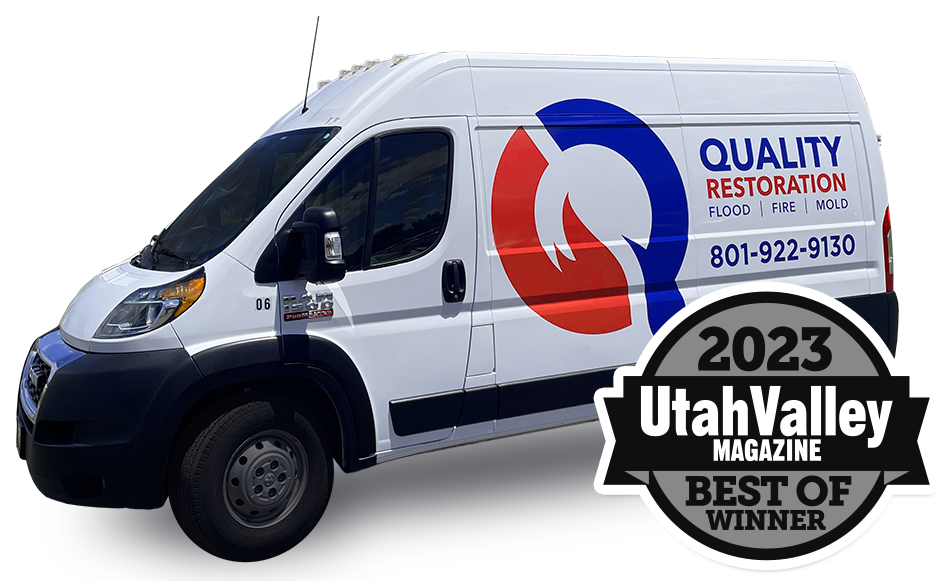Water damage can be devastating and costly for homeowners. From plumbing leaks to natural disasters, there are countless ways in which water can infiltrate your home and cause damage. That’s why it’s crucial to take proactive measures to safeguard your home against potential water damage risks.
In this comprehensive guide, we will provide you with effective water damage prevention tips to reduce the risk of costly repairs and to protect your home and belongings. By following these strategies, you can identify potential issues early on and take action to prevent water damage from occurring.
Key Takeaways
- Water damage can be costly and devastating for homeowners.
- Proactive measures can be taken to safeguard your home against potential risks.
- Effective water damage prevention strategies can help identify potential issues early on and reduce the risk of costly repairs.
- Following proper maintenance and inspection techniques can prevent water damage from occurring.
- It’s essential to educate household members on water-saving habits and recognizing signs of potential issues.
Understanding the Causes of Water Damage
Before taking any preventive measures, it’s crucial to understand the common causes of water damage in your home. This knowledge can help you identify potential issues early on and take the necessary steps to mitigate risks. Here are the primary culprits behind water damage:
| Cause | Description |
|---|---|
| Plumbing leaks | Leaking pipes, faucets, and fixtures can cause significant water damage if not addressed promptly. |
| Faulty appliances | Malfunctioning dishwashers, washing machines, and water heaters can leak and cause water damage. |
| Roof problems | Roof leaks or inadequate insulation can lead to water damage in your ceiling or walls. |
| Natural disasters | Heavy rain, flooding, and hurricanes can cause significant water damage to your home. |
By being aware of these causes, you can take the necessary steps to prevent or mitigate water damage in your home.
Regular Maintenance and Inspections
Regular maintenance and inspections are essential for preventing water damage. By identifying and addressing potential issues early, you can avoid costly water damage repairs. Here are some tips to help you keep your home in tip-top shape:
| Area of Inspection | Recommended Frequency |
|---|---|
| Plumbing System | Annually |
| Roof | Annually |
| Gutters and Downspouts | Bi-annually |
| Appliances | As recommended by manufacturer |
During a plumbing inspection, a professional plumber will check for leaks, inspect pipes, check the water pressure, and ensure that all plumbing fixtures are in good working order. Regular roof inspections can help identify potential leaks before they cause damage. During a gutter and downspout inspection, the contractor will remove debris, check for proper drainage, and ensure that the gutters and downspouts are securely fastened to the house. Be sure to follow the manufacturer’s recommended maintenance schedule for appliances.
In addition to scheduled inspections, it’s important to keep an eye out for signs of potential water damage. These include water stains on ceilings or walls, musty smells, and visible mold growth. If you notice any of these signs, contact a professional immediately.
By following these regular maintenance and inspection tips, you can help prevent water damage and protect your home and belongings.
Proper Waterproofing Techniques
One of the most effective ways to prevent water damage is by implementing proper waterproofing techniques. By waterproofing vulnerable areas of your home, you can prevent water from entering and causing damage. Here are some essential waterproofing techniques:
| Technique | Description |
|---|---|
| Sealing cracks | Sealing cracks in your home’s foundation, walls, and floors can prevent water from seeping through. Use a waterproof sealant to fill in any cracks or gaps. |
| Installing sump pumps or French drains | If you have a basement or crawl space, consider installing a sump pump or French drain system. These systems can redirect water away from your home’s foundation and prevent flooding. |
| Utilizing moisture barriers | Moisture barriers can be installed in areas like bathrooms or kitchens to prevent water from seeping into walls or floors. These barriers can be made of various materials like plastic or rubber and are effective at preventing water damage. |
By implementing these waterproofing techniques, you can protect your home from water damage. Make sure to perform regular maintenance and inspections to ensure everything is functioning correctly.
Efficient Drainage Systems
When it comes to preventing water damage, ensuring proper drainage around your home is crucial. Without it, water can seep into your foundation and cause extensive damage. Here are some tips to help you maintain efficient drainage systems:
| Tip | Description |
|---|---|
| Correctly positioned downspouts | Your downspouts should extend at least 5 feet away from your home’s foundation to prevent water from seeping into your basement or crawl space. |
| Proper grading | Ensure that the grading around your home slopes away from your foundation. This will help divert water away from your home. |
| Effective landscaping techniques | Strategic landscaping can help divert water away from your home. Consider planting trees and shrubs, creating swales or berms, or installing French drains. |
By implementing these drainage solutions, you can protect your home from water damage and avoid costly repairs. Take proactive measures to keep your home safe and dry.
Protecting Your Home from External Sources
Heavy rainfall, flash floods, and natural disasters can cause significant water damage to your home. Protecting your home from these external sources is crucial to minimize water damage risks.
Installing flood barriers is one of the most effective ways to prevent external water from entering your home. These barriers are designed to redirect floodwater away from your home’s foundation and minimize water damage.
Window well covers are another way to protect your home from external water sources. These covers prevent rainwater from entering through your basement windows, preventing water damage from occurring in your basement.
Reinforcing vulnerable areas in your home is another way to protect your home from external water sources. This includes sealing cracks in your foundation or walls and installing proper drainage systems.
| Tip | Description |
|---|---|
| Install a sump pump | A sump pump is a device that removes accumulated water in your basement and prevents it from causing water damage. Consider installing one if you live in an area prone to flooding or heavy rainfall. |
| Divert water away from your foundation | Proper grading and landscaping techniques can help redirect water away from your home’s foundation, preventing water damage. |
| Inspect your roof regularly | Check your roof for any damage or leaks regularly. Identify and address issues promptly to prevent water damage from occurring. |
Protecting your home from external sources requires a combination of preventive measures and proactive planning. By installing flood barriers, window well covers, and reinforcing vulnerable areas, you can minimize potential water damage risks and protect your home and belongings effectively.
Monitoring and Controlling Indoor Humidity
Indoor humidity is a crucial factor in preventing water damage and mold growth. High humidity levels can cause condensation on windows and walls, leading to moisture buildup that can result in water damage and mold.
To control indoor humidity levels, it’s essential to ensure proper ventilation in your home. You can install exhaust fans in bathrooms and kitchens and keep windows open during warm months to allow air to circulate freely. Additionally, using a dehumidifier can help control moisture levels in your home and prevent water damage.
Another crucial step in controlling indoor humidity is addressing plumbing leaks promptly. Leaks can cause moisture to accumulate, leading to high humidity levels and water damage. Regularly inspecting your plumbing and addressing any leaks immediately can prevent this from happening.
Remember: Monitoring and controlling indoor humidity levels is an essential step in preventing water damage and mold growth in your home. Be proactive in addressing moisture buildup and take steps to ensure proper ventilation and plumbing maintenance.
Educating Your Household Members
Preventing water damage in your home requires a team effort, and the active participation of everyone in your household is crucial. Here are some tips to educate your family members about water damage prevention:
- Teach them about the common causes of water damage, such as leaky pipes or appliances, and how to recognize the signs of potential issues.
- Encourage them to report any leaks or water damage to you immediately.
- Show them how to turn off the water supply in case of an emergency.
- Teach them how to properly use appliances like the washing machine and dishwasher to prevent overflow and leaks.
- Encourage them to practice water-saving habits, like turning off the faucet while brushing their teeth or taking shorter showers.
- Involve them in regular maintenance tasks, such as cleaning gutters, checking for leaks, and inspecting appliances.
By educating your household members about water damage prevention, you can work together to keep your home and belongings safe from potential water damage risks. Remember, prevention is key, and every little effort counts.
Insurance Coverage and Emergency Plans
While taking preventative measures is crucial for water damage prevention, it’s essential to have appropriate insurance coverage and emergency plans in place. In the unfortunate event of water damage, insurance coverage can help you cover the expenses of repairs and replacements.
Ensure that your home insurance policy covers water damage caused by internal factors such as burst pipes, leaks, and appliance malfunctions. It’s worth noting that not all policies cover damages caused by natural disasters such as floods. In such cases, you may need to purchase additional flood insurance coverage.
Creating an emergency plan with clear instructions and contact information is vital in case of a water damage emergency. Make sure all household members are aware of the plan and know who to contact for help. A well-prepared emergency kit can also come in handy in case of water damage. The kit should include essential items such as a first aid kit, flashlight, and emergency contacts.
Remember to review and update your insurance coverage and emergency plans regularly. As your household members and circumstances change, your plans should reflect those changes to ensure maximum protection.
Conclusion
Congratulations, you’ve reached the end of our guide to successful water damage prevention tips. By implementing the strategies outlined in this comprehensive guide, you’re taking proactive measures to safeguard your home and belongings from the devastating effects of water damage.
Remember, understanding the common causes of water damage, regular maintenance and inspections, proper waterproofing techniques, efficient drainage systems, protecting your home from external sources, monitoring and controlling indoor humidity, educating your household members, and having appropriate insurance coverage and emergency plans are all key components to prevent water damage.
Stay vigilant and regularly implement these preventive measures to avoid costly repairs and potential health hazards caused by water damage. You can rest easy knowing that you’ve done everything possible to prevent water damage risks and protect your home effectively.
FAQ
What are some common causes of water damage?
Common causes of water damage include plumbing leaks, faulty appliances, roof problems, and natural disasters.
Why is regular maintenance and inspections important for preventing water damage?
Regular maintenance and inspections help identify potential issues early on, allowing you to take proactive measures to prevent water damage.
What are some effective waterproofing techniques?
Effective waterproofing techniques include sealing cracks, installing sump pumps or French drains, and utilizing moisture barriers.
How can I ensure proper drainage around my home?
Proper drainage can be ensured by positioning downspouts correctly, grading your landscape appropriately, and using effective landscaping techniques.
How can I protect my home from external water sources?
To protect your home from external water sources, consider installing flood barriers, using window well covers, and reinforcing vulnerable areas.
How can I monitor and control indoor humidity?
Indoor humidity can be monitored and controlled through proper ventilation, using dehumidifiers, and addressing plumbing leaks promptly.
Why is it important to educate household members about water-saving habits?
Educating household members about water-saving habits helps prevent water waste and promotes awareness of potential water damage risks.
What should I include in my emergency kit for water damage emergencies?
Your emergency kit should include essentials like a flashlight, batteries, a first aid kit, important documents, and emergency contact information.
Do I need insurance coverage for water damage?
It is important to have appropriate insurance coverage for water damage to protect your home and belongings in the event of a water damage incident.
How can I prevent water damage risks effectively?
By implementing the water damage prevention tips mentioned in this guide, you can effectively minimize the risks of water damage to your home and belongings.




















